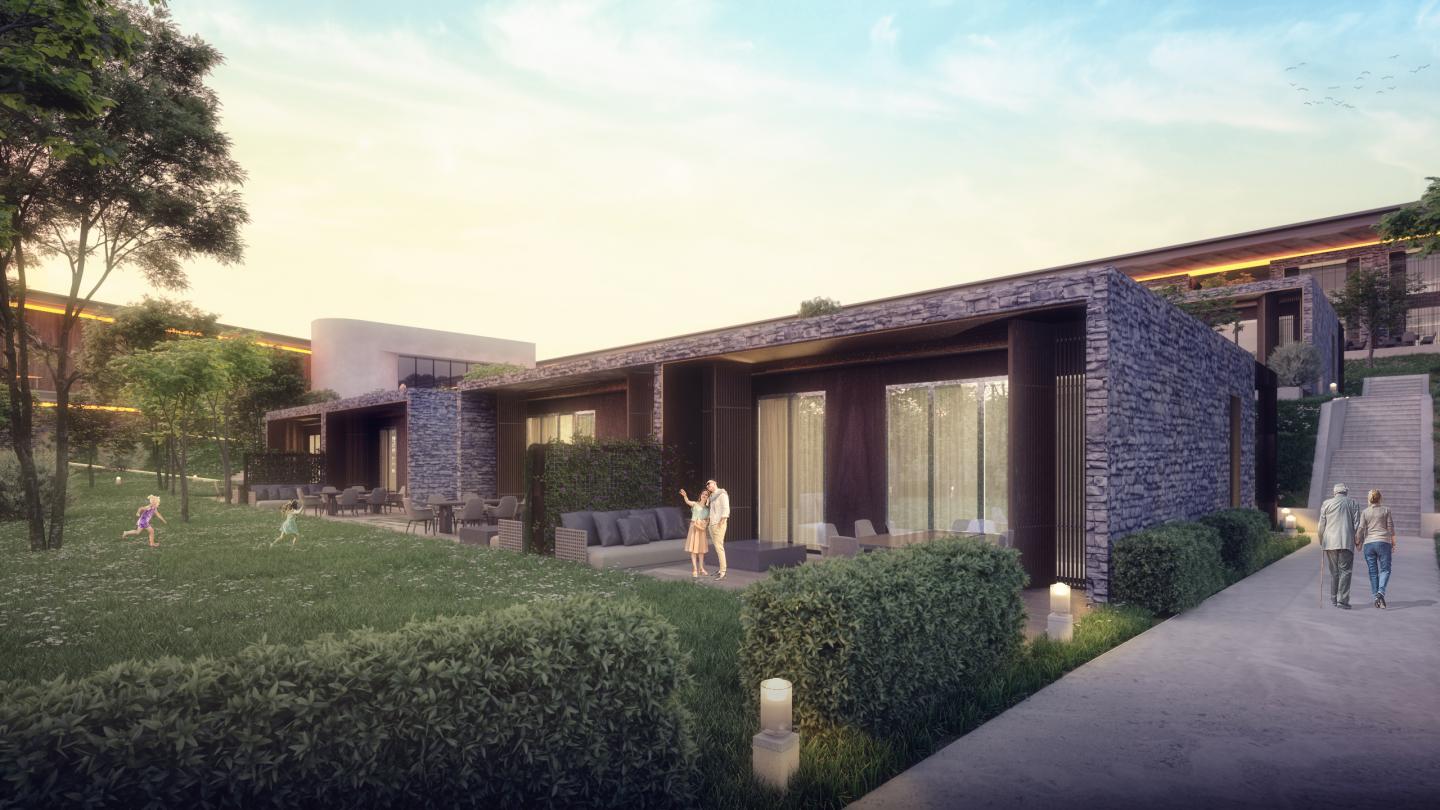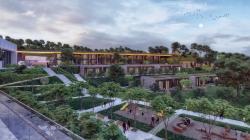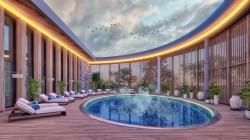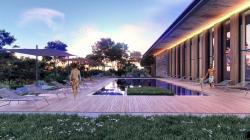Tokat Sulusaray Thermal Facilities located at the junction of the provinces of Tokat, Yozgat, and Sivas, designed by Studio Vertebra, aims at keeping the city’s memory alive and revitalizing the tourism with its approach that is in harmony with the natural silhouette and that takes the city’s historical ruins as reference.
Having conducted “multidisciplinary” works at national and international scales in the fields of architecture, interior decoration and restoration since the day it was found, the Istanbul-based design office Studio Vertebra under partners Chief Architect Gencer Yalçın, Master Architect Dilşad Öktem Aslaner, Master Architect Bahar Yücel and Interior Architect Efe Kağan Hızar designs the project for the Tokat Sulusaray Thermal Facilities located at an important point at the intersection of the provinces of Tokat, Yozgat, and Sivas.
Sulusaray Thermal Facilities project, which has a construction area of 4.370 m² and was brought to life with support by the Governorship of Tokat, is very important in that it will contribute to the socio-economic structure of the local community by revitalizing the tourism.
The historical importance, for the region, of the Byzantine-era bathhouse ruins and hot water source with a history of two thousand years, which was revealed during the excavations conducted at the Sebastopolis Ancient City in Sulusaray, constituted an important starting point in Studio Vertebra’s design. The backbone of the project, which revisits the apart, bathhouse and hotel buildings included in the scope of the Tokat Sulusaray Thermal Facilities project area, which were used actively in the 1980s, but were abandoned in time while nevertheless remaining alive in the memory of the local community, is formed by an eave design that bonds with the topography to become a part of it.
Aiming at becoming part of the geography that is surrounded by tall trees, large green areas and rocky hills in the design of the facility without damaging the natural silhouette, Studio Vertebra horizontally connected two small hills situated on the land through the use of this eave design. In this context, the eave and the topography come to the fore as integrating and connecting factors that form the project’s main theme.
Having a linear effect on the silhouette, this eave functionally divides private and public use areas together with the entrance space and the square that meets it. While the private spaces consist of two-storey apartments with a gallery space, designed for large families, the public areas include the bathhouses, thermal baths and private areas for families, all of which remain within the scope of the thermal facilities project. In addition to private and public functions, the Tokat Sulusaray Thermal Facilities also include a social center attached to this eave, and apartments designed for smaller families, which fit in with the topography.
Having used natural and timeless materials such as wood, stone and glass in the façade of the Tokat Sulusaray Thermal Facilities, Studio Vertebra has strengthened the building’s relation to its environment. The reflection of the façade and the environment on the interior space has influenced the creation of high, plain and light spaces. High windows were designed to make maximum use of sunlight, by which a visual relation was also achieved between the spaces and the landscape. The women’s pool located in the facilities opens into an inner garden surrounded by pergolas in order to ensure privacy.
The landscaping of the Tokat Sulusaray Thermal Facilities, which has a base area of 2.800 m2 on a 38.273 m2 land, boasts walking and jogging tracks, recreation areas, playgrounds for children, and a grove with a garden of flowers, which has been provided with access ramps for those with disabilities.
A contribution to the development of tourism in Tokat is envisaged through the Tokat Sulusaray Thermal Facilities, shaped by Studio Vertebra to be in harmony with the geography on which it is located, through a design approach based on timelessness and simplicity, and by which it aims at responding to the needs of the local community.
2019
0000





